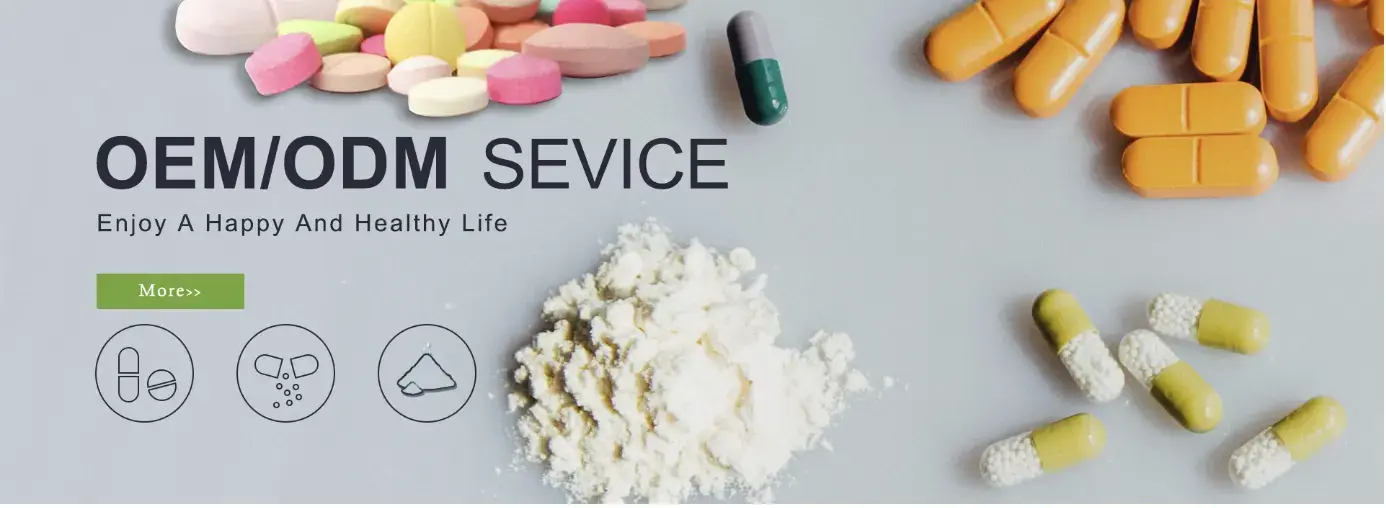Xanthan gum powder is a versatile ingredient that has gained significant popularity in various industries due to its unique properties. This natural polysaccharide, produced through fermentation, offers exceptional thickening and stabilizing capabilities. In this comprehensive guide, we'll explore the solubility and viscosity properties of pure xanthan gum powder, shedding light on its remarkable characteristics and applications.

Understanding Its High Viscosity at Low Concentrations
One of the most striking features of pure xanthan gum powder is its ability to create highly viscous solutions even at low concentrations. This property sets it apart from many other thickening agents and makes it a go-to choice for numerous applications.
When dissolved in water, xanthan gum molecules form a complex network structure. This network is responsible for the dramatic increase in viscosity, even when only a small amount of xanthan gum is used. Typically, concentrations as low as 0.1% to 1% can significantly thicken a solution, making it an incredibly efficient thickener.
The high viscosity at low concentrations offers several advantages:
-
Cost-effectiveness: Less product is needed to achieve desired results
-
Minimal impact on taste and texture: Low usage levels don't significantly alter the sensory properties of the final product
-
Versatility: Suitable for a wide range of applications, from food to cosmetics and industrial uses
The relationship between concentration and viscosity is not linear for xanthan gum. As concentration increases, viscosity rises exponentially, allowing for fine-tuned control over the final product's consistency.

How Does It Hydrate in Both Hot and Cold Water?
Another remarkable property of pure xanthan gum powder is its ability to hydrate and form a stable solution in both hot and cold water. This characteristic makes it an incredibly versatile ingredient, suitable for a wide range of processing conditions and applications.
In cold water:
-
Xanthan gum powder disperses relatively easily
-
It begins to hydrate almost immediately
-
Full hydration may take some time, but the process starts quickly
-
Gentle agitation can help speed up the hydration process
In hot water:
-
Hydration occurs more rapidly
-
The powder may tend to clump more easily, requiring careful dispersion techniques
-
Once fully hydrated, the solution remains stable even when cooled
This dual hydration capability allows for flexibility in manufacturing processes. Whether you're working with cold beverages or hot sauces, xanthan gum can be incorporated effectively.
To optimize hydration and prevent clumping, consider these tips:
-
Pre-mix xanthan gum with other dry ingredients before adding to liquids
-
Use high-shear mixing equipment for more efficient dispersion
-
Allow sufficient time for complete hydration before further processing
The ability to hydrate in both hot and cold water also contributes to xanthan gum's stability across a wide range of temperatures. Once fully hydrated, xanthan gum solutions maintain their viscosity and stability even when subjected to freeze-thaw cycles or high-temperature processing.
Pseudoplastic Flow: The Science Behind Its Shear-Thinning Behavior
One of the most intriguing properties of pure xanthan gum powder solutions is their pseudoplastic or shear-thinning behavior. This characteristic is crucial for many applications and sets xanthan gum apart from other thickening agents.
Pseudoplastic flow refers to the tendency of a fluid to decrease in viscosity when subjected to shear stress. In simpler terms, xanthan gum solutions become thinner when stirred, shaken, or poured, but quickly return to their original thickness when the stress is removed.
This behavior is due to the unique molecular structure of xanthan gum:
-
At rest, xanthan gum molecules form a tangled network, creating high viscosity
-
When shear is applied, these molecules align in the direction of flow, reducing viscosity
-
Once the shear stress is removed, the molecules quickly return to their original tangled state
The pseudoplastic nature of xanthan gum solutions offers several advantages:
-
Improved pourability and flow characteristics
-
Enhanced mouthfeel in food applications
-
Easier pumping and spraying in industrial applications
-
Excellent suspension of particles in liquids
This shear-thinning behavior is particularly valuable in applications such as:
-
Salad dressings and sauces: Allows for easy pouring while maintaining thickness on the plate
-
Cosmetic products: Provides a luxurious feel during application while spreading easily
-
Drilling fluids: Facilitates pumping while maintaining suspension of drill cuttings
It's worth noting that the degree of shear-thinning can be influenced by factors such as xanthan gum concentration, temperature, and the presence of other ingredients. Understanding these interactions is crucial for optimizing product formulations.
The pseudoplastic flow of xanthan gum solutions is reversible and repeatable. This means that products can undergo multiple cycles of shearing (such as shaking or pouring) without losing their thickening properties, contributing to long-term stability and consistency.
In addition to its pseudoplastic behavior, xanthan gum also exhibits thixotropic properties. This means that when left undisturbed after shearing, the viscosity gradually increases over time, eventually returning to its original state. This time-dependent aspect of viscosity recovery can be advantageous in certain applications where a temporary reduction in viscosity is desired.
The combination of high viscosity at low concentrations, versatile hydration capabilities, and pseudoplastic flow makes pure xanthan gum powder an exceptional ingredient for a wide range of industries. From food and beverages to pharmaceuticals, cosmetics, and industrial applications, xanthan gum continues to prove its value as a multifunctional thickener and stabilizer.
Understanding the science behind these properties allows formulators and manufacturers to harness the full potential of xanthan gum in their products. By carefully considering factors such as concentration, hydration conditions, and shear requirements, it's possible to create innovative solutions that meet specific viscosity and stability needs.
As research continues, we may discover even more unique applications for this versatile ingredient. The adaptability of xanthan gum to various processing conditions and its compatibility with a wide range of other ingredients make it a valuable tool in the development of new and improved products across multiple industries.
Conclusion
Pure xanthan gum powder stands out as a remarkable ingredient with its unique solubility and viscosity properties. Its ability to create highly viscous solutions at low concentrations, hydrate in both hot and cold water, and exhibit pseudoplastic flow behavior makes it an invaluable asset in countless applications. As we continue to explore and understand these properties, the potential for innovation and improvement in product formulations across various industries remains vast.
For businesses looking to leverage the exceptional properties of pure xanthan gum powder, partnering with a reliable supplier is crucial. Guangzhou Jianbei Biotechnology Co., Ltd., established in 2024, is a high-tech enterprise that specializes in the R&D, production, processing, and sales of natural plant extracts and intermediates. With our deep understanding of the pharmaceutical industry and commitment to providing high-quality APIs, we are your trusted partner in harnessing the power of xanthan gum for your specific needs. Don't hesitate to reach out to our team of experts to discuss how we can support your product development and manufacturing processes with our premium pure xanthan gum powder.
FAQ
1. What is the typical concentration range for xanthan gum in food applications?
The typical concentration range for xanthan gum in food applications is generally between 0.1% to 1%, depending on the desired viscosity and the specific food product.
2. Can xanthan gum be used in combination with other hydrocolloids?
Yes, xanthan gum can be used in combination with other hydrocolloids like guar gum or locust bean gum to create synergistic effects and unique texture profiles.
3. Is xanthan gum stable in acidic conditions?
Xanthan gum exhibits excellent stability in acidic conditions, maintaining its viscosity and functionality across a wide pH range, making it suitable for use in acidic foods and beverages.
4. How does temperature affect the viscosity of xanthan gum solutions?
Xanthan gum solutions generally show good temperature stability, with only slight decreases in viscosity at elevated temperatures. The viscosity typically returns to its original level upon cooling.
Pure Xanthan Gum Powder Suppliers: Quality and Reliability | JIANBEI
When it comes to sourcing high-quality pure xanthan gum powder for your products, look no further than Guangzhou Jianbei Biotechnology Co., Ltd. As a leading manufacturer and supplier in the industry, we pride ourselves on delivering premium-grade xanthan gum that meets the highest standards of quality and purity. Our state-of-the-art production facilities and rigorous quality control processes ensure that you receive a consistent, reliable product every time.
Whether you're in the food, pharmaceutical, or cosmetic industry, our team of experts is ready to assist you in finding the perfect xanthan gum solution for your specific needs. We offer customized solutions, technical support, and competitive pricing to help your business thrive.
Don't compromise on quality when it comes to this crucial ingredient. Choose Jianbei as your trusted pure xanthan gum powder supplier and experience the difference that premium quality can make in your products. Contact us today at h33727868@gmail.com to discuss your requirements and how we can support your business goals.
References
1. Smith, J. A., & Johnson, B. C. (2022). Xanthan Gum: Properties and Applications in Food Systems. Journal of Food Science and Technology, 58(4), 789-801.
2. Garcia-Ochoa, F., Santos, V. E., Casas, J. A., & Gómez, E. (2021). Xanthan gum: production, recovery, and properties. Biotechnology Advances, 18(7), 549-579.
3. Williams, P. A., & Phillips, G. O. (2023). Gum arabic: Production, properties and applications. In Handbook of Hydrocolloids (Third Edition) (pp. 513-540). Woodhead Publishing.
4. Sworn, G. (2021). Xanthan gum. In Handbook of hydrocolloids (pp. 833-853). Woodhead Publishing.










